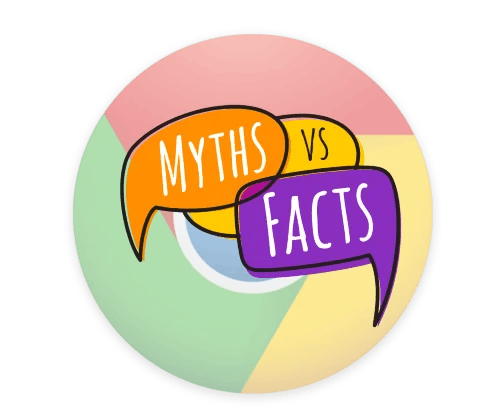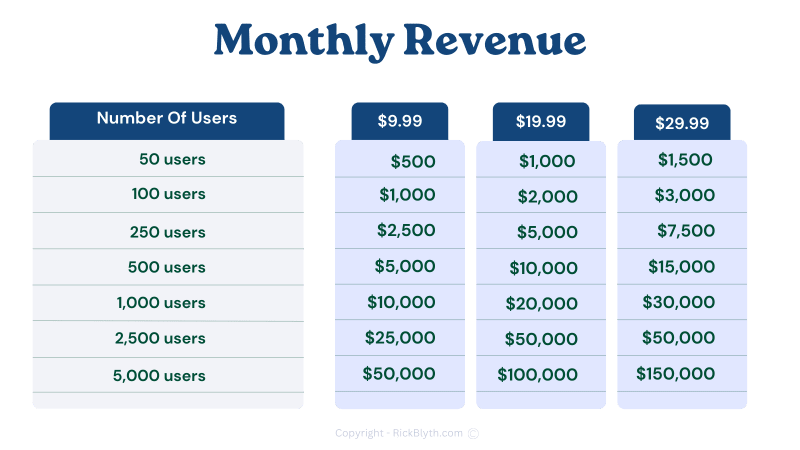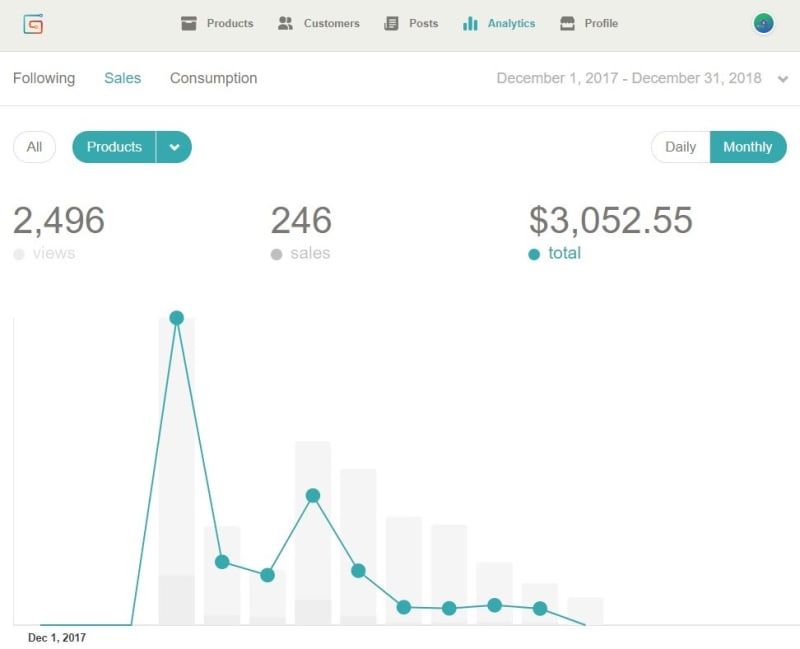When it comes to developing profitable Chrome extensions, many misconceptions and myths are floating around. It's easy to get discouraged when you're unsure what's true and what's not.
That's why in this article, I will debunk seven of the biggest myths that are holding people back from developing profitable Chrome extensions 🔥
Whether you've heard these myths from colleagues, friends or just stumbled upon them on the internet, it's time to set the record straight and take your first step towards developing successful and profitable Chrome extensions.
Myth #1: Chrome Extensions Can't Generate Significant Revenue
This is simply not the case, and I have the numbers to prove it 📈
For one, my own Chrome extensions generated multiple six-figures in subscription income before I exited for a multi-six figure lump sum cash payment. In total, I’ve generated over $500,000 in revenue from my niche Chrome Extensions.
Other Chrome Extensions run by solo/indie developers include:
- OneUp - Social Media Scheduling Tool - ~$10k/month
- Closet Tools - Poshmark Automation - ~$35k/month
- *Gmass *- Gmail marketing and mail merge automation - $130k/month
If you need any more convincing, then take a look at the potential revenue numbers you can achieve with a modest user base illustrated by this graphic below:
Myth #2: The Market for Chrome Extensions is Saturated
It's a common misconception that there's no room for new Chrome extensions in the market and that the space is too crowded. However, the internet is constantly evolving and new websites and web apps are always coming online, creating new opportunities for niche extensions.
For example, there has been an influx of Chrome Extensions built around ChatGPT, including the controversial AIPRM for ChatGPT, which has rocketed to close to 1 million users in just 3 months! 🚀
That doesn’t mean you can only build for new websites/web apps though, there are thousands of websites with passionate niche user bases that would love you to build a Chrome Extension that enhances their favourite website. This is especially true if you can save them time and/or money.
Myth #3: You Can't Sell and Exit from a Chrome Extension Business
Another myth about Chrome extensions is that it's not possible to sell or exit from a Chrome extension business.
Wrong! ⛔
The market for acquiring cashflowing digital assets, including Chrome extensions, is growing rapidly.
For one, I sold my Amazon-based Chrome Extensions within 5 hours of listing them on Empire Flippers for the full asking price! You can read more about that at https://rickblyth.com/selling-and-exiting-your-micro-saas
On a much, much larger scale Paypal famously acquired the Honey Chrome Extension for $4 billion!
Myth #4: It Takes a Long Time To Build a Chrome Extension
Building a Chrome extension can seem like a daunting task, especially if you already have existing commitments. However, with proper time management and goal setting, it's possible to develop an extension without sacrificing too much time.
My first paid Chrome Extension, which made me over $3,000, took me around 4-5 hours to cobble together over one weekend. It was super basic, but it did everything it said it would, and critically, it fixed a painful problem for my user base.
It's also important to remember that developing Chrome extensions is an iterative and compounding process. This means that you can invest time according to your schedule, whether it's a few hours a week or a few hours a day and your efforts compound in the form of a growing feature set and an expanding user base.
Myth #5: Chrome Extensions Require Constant Maintenance and Updates
Another common myth about Chrome extensions is that they require constant maintenance and updates. While updates are important for maintaining the success of an extension, they can be managed efficiently with proper planning 🧱
One way to minimize the need for frequent updates is by building a solid foundation. This means taking the time to design and develop your extension properly from the start. By ensuring that your code is clean and well-organized, you'll be able to make updates more easily and avoid introducing new bugs.
For example, having the IDs and class names of any referenced elements on the host website’s UI in a central file can make it much easier to make updates as and when the host website’s UI is updated.
Myth #6: Chrome Extensions Can Only Be Monetized Through the Chrome Web Store
While it’s true you used to be able to handle subscriptions and take payments via the Chrome Web Store itself, the payment platform was deprecated many years ago. Those of us that have been around long enough to have actually used it will tell you that it was clunky AF and not a great experience 🙈
Alternative payment providers such as Gumroad, WooCommerce, Stripe, ExtensionPay and more allow for a much better experience for both the developer and the customers.
However, don’t forget you can also monetise Chrome Extensions via affiliate marketing, advertising, sponsorship deals, and user base monetization. By exploring these different possibilities, you can diversify your income streams and increase your potential earnings.
Myth #7: Google will discontinue support for Chrome extensions.
To me, this seems incredibly unlikely.
Google has made significant investments in improving their extensions marketplace as part of their Manifest V3 initiative. This initiative focuses on improving extension performance, privacy, and security, which is part of Google's ongoing efforts to ensure that all Chrome extensions are safe and secure for users.
Google has also been actively involved in the browser standardization work of the W3C, which aims to ensure that all browser extensions are built using a common set of standards.
So, I don’t think software developers should worry about Google discontinuing support for Chrome extensions any time soon.
Instead, they should focus on creating high-quality extensions that follow Google’s policies alongside best practices. With the ongoing support and improvements being made by Google, Chrome extensions will continue to be a valuable tool for programmers and users alike.
In summary, if you're considering developing a Chrome extension, you can rest assured that Google will continue to be supported for the foreseeable future.
Now that you know the truth behind these seven myths, you can confidently pursue the development of profitable Chrome Extensions.
With the right idea, resources, and execution, your extension can solve a problem for your target audience and generate a steady stream of income, so don't let these misconceptions hold you back from achieving success.
But, you may be wondering how to give yourself the best chance of success?
The answer is simple - seek mentorship from someone who has already been successful in this arena.
That's where my Cashflowing Chrome Extensions course comes in. With my guidance, you'll not only learn the technical aspects of developing Chrome extensions but you'll also learn how to market and monetise your Chrome Extension effectively.
This is all based on my own experience of making over $500,000 from my Chrome Extensions, Merch Wizard & KDP Wizard. This total comprised of multiple six-figures in subscription income followed by a multiple six-figure exit too.
So, if you're ready to start building a profitable Chrome extension, you can head to https://www.cashflowingchromeextensions.com/ to learn more about my course and how it can help you succeed in creating profitable Chrome Extensions.








Top comments (0)